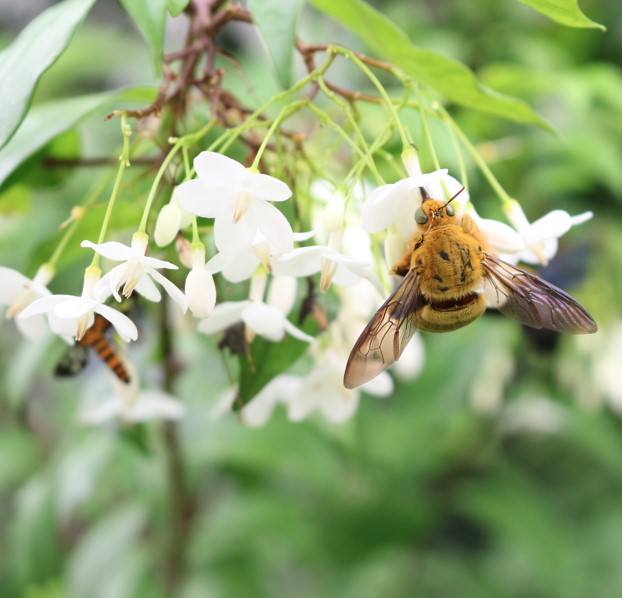
Species Information
Valley Carpenter Bee

| Status |
Least Concern: species that have a widespread and abundant population and are not currently threatened. |
| Family |
Apidae |
| Description | The female is solid black, while the male is green-eyed and blond |
| Habitat | Suburban gardens, agricultural fields and wooded areas |
| Host Plant | California poppy and lilac, native morning glories |
| Reproduction | An egg is deposited on pollen mass and sealed off with sawdust |
| Threats |
Natural predators, mammals and birds |
| Range | Western Texas to Northern California and Pacific Islands |
The Valley carpenter bee (Xylocopa varipuncta) is a species of bee found in the western United States. They are a solitary bee, nesting in wood and occasionally in mud. They are a large bee, with the female typically black in color with yellow stripes on their abdomen. The male is green-eyed and blond in color.
Carpenter bees are important pollinators for many crops, including apples, melons, squash, and other flowers. They feed on the nectar and pollen from these plants, helping to spread pollen and ensure the crops will be pollinated. Additionally, they act as predators, feeding on other insects such as caterpillars and aphids. Their presence in the environment helps to keep the populations of these pests in check. The bee is also known for their loud buzzing sound while in flight.
The bees are active in the spring and summer months and during the early morning and late afternoon when temperatures are cooler. They nest in holes they have drilled into wood, and the males guard the entrance to the nest.
Valley carpenter bees can be found in a variety of habitats, including suburban gardens, agricultural fields, and wooded areas. They are most often found in dry, open areas with access to wood.
